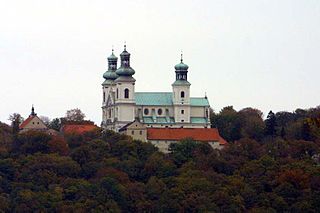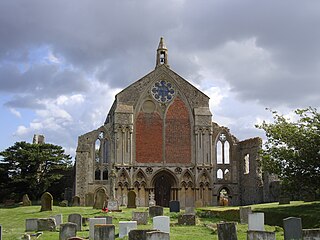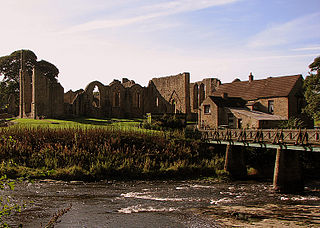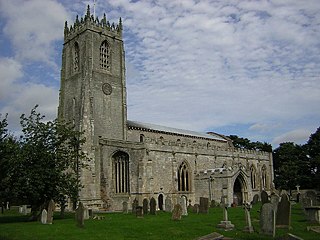
The Benedictines, officially the Order of Saint Benedict, are a monastic religious order of the Catholic Church following the Rule of Saint Benedict. They are also sometimes called the Black Monks, in reference to the colour of their religious habits. They were founded by Saint Benedict of Nursia, a 6th-century monk who laid the foundations of Benedictine monasticism through the formulation of his Rule of Saint Benedict.

The Camaldolese monks and nuns are two different, but related, monastic communities that trace their lineage to the monastic movement begun by Saint Romuald.

Alvecote Priory is a ruined Benedictine Priory in Alvecote, Warwickshire, England. The site has been scheduled as an ancient monument. Now very little remains of the priory, most of the walls have been eroded but a fairly high wall remains on one side. The main entrance arch is the most impressive feature, still standing at around 20 feet (6.1 m) high. The attached dovecote also survives, however both the ruined priory and dovecot are on the Heritage at Risk Register due to vandalism and water damage.

Thetford Priory is a Cluniac monastic house in Thetford, Norfolk, England. It should not be confused with the Dominican Friary of Blackfriars, Thetford that later became part of Thetford Grammar School.

St Mary's Priory, Binham, or Binham Priory, is a ruined Benedictine priory located in the village of Binham in the English county of Norfolk. Today the nave of the much larger priory church has become the Church of St. Mary and the Holy Cross and is still used as a place of worship. The remains of the priory are in the care of English Heritage. The abbey's west face is the first example in England of gothic bar tracery, predating Westminster Abbey by a decade.

Finchale Priory(pronounced finkle) sometimes referred to as Finchale Abbey was a 13th-century Benedictine priory. The remains are sited by the River Wear, four miles from Durham, England. It is a Grade I listed building.

Bardney Abbey in Lincolnshire, England, was a Benedictine monastery founded in 697 by King Æthelred of Mercia, who was to become the first abbot. The monastery was supposedly destroyed during a Danish raid in 869. In 1087, the site was refounded as a priory, by Gilbert de Gant, Earl of Lincoln, and it regained status as an abbey in 1115.
Armathwaite Nunnery was a Benedictine nunnery in Cumbria, England. It was situated near the confluence of the rivers Croglin Water and Eden in the southern angle of the parish of Ainstable, and was first known as the nunnery of Ainstable.

Otterton Priory was a priory in Otterton, Devon founded before 1087 and suppressed in 1414. The tower of the parish church is the major remaining structure of the monastery. The manor house probably reuses parts of the monastery's fabric.

The Priory of St Mary de Bello Loco, commonly referred to as Molycourt Priory, was a small Benedictine priory located in the parish of Outwell, Norfolk, England.
St. George's Priory, Thetford was a Benedictine priory on the Suffolk side of Thetford, England. It was located at the current site of the British Trust for Ornithology, South of Nuns Bridges Road.

Blyth Priory was a priory in Nottinghamshire, England, dedicated to St Mary the Virgin.
Eye Priory was a Benedictine Priory dedicated to St Peter in the town of Eye in the UK county of Suffolk. It was founded by Robert Malet c. 1080 and originally an Alien Priory dependent on the Abbey of Bernay in Normandy. It became independent in 1385 by charter of Richard II when it could support only 3 -4 monks. It was finally dissolved in 1537 as part of the dissolution of the monasteries with the lands being given to Charles Brandon.










